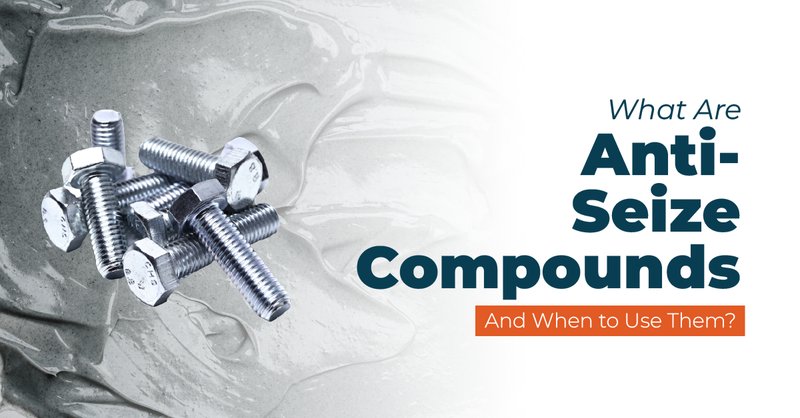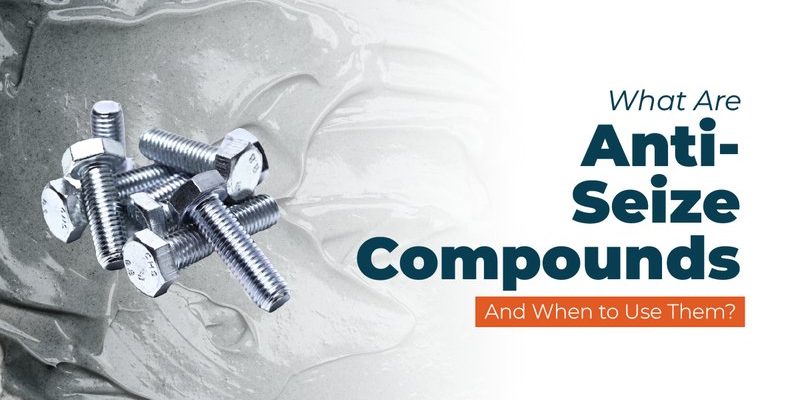
Honestly, I can’t count the number of times I’ve heard someone complain about “welded” hardware after a season outside. You might be using the best stainless-steel screws or top-tier brands, but if you skip this simple step, you’re gambling with future frustration. Let me explain exactly why and how anti-seize compound should become a staple in your outdoor hardware toolkit.
Why Use Anti-Seize Compound on Exterior Screws?
When you’re building or fixing something outdoors, your hardware is up against a tough crowd: rain, salt, dirt, wild temperature swings, and time itself. Over months or years, moisture and oxygen wedge themselves into the tiniest cracks, causing metal to corrode, stick, and seize up. That’s why so many fences and decks become a nightmare to take apart or repair. Anti-seize compound acts like a protective barrier—a slick, high-temp blend of lubricants and solid particles (think graphite or copper) that blocks out those nasty elements.
You might be wondering: isn’t stainless steel already rust-proof? Not exactly. Even stainless can gall or seize, especially when it rubs against itself. Aluminum and galvanized hardware are notorious for sticking, too. Anti-seize stops “galling,” which is a fancy word for the metal-on-metal friction that chews up threads. Basically, a tiny swipe of this stuff makes sure your screws stay removable, even after a few brutal winters.
Here’s the thing: it doesn’t just help with rust. Anti-seize also keeps hardware from fusing together due to heat, pressure, or weird chemical reactions—stuff you’d never expect until it’s too late. If you’re serious about making your outdoor projects last (and easy to maintain), anti-seize isn’t optional.
Choosing the Right Anti-Seize Compound for Outdoor Projects
Walk into any hardware store and “anti-seize compound” sounds simple—until you see a dozen different tubes. There’s copper-based, nickel-based, aluminum-based, and even “marine grade.” The right pick depends mostly on your outdoor environment.
Copper-based anti-seize is the classic choice, known for handling extreme heat and staying slick even when exposed to the elements. It’s great for steel fasteners and general outdoor hardware. Nickel-based compounds offer extra resistance against chemical corrosion and super-high heat, so they’re common in marine or salty seaside locations where regular compounds might fail. Aluminum-based anti-seize is a good all-rounder for lighter metals and non-stainless screws.
If you’re not sure what to grab, go for a name-brand, all-purpose anti-seize that mentions “outdoor” or “exterior” use on the label. Permatex and Loctite both make reliable options.
Don’t mix up anti-seize with basic lubricants or greases—they’re not interchangeable. Regular greases break down in weather and can attract grit, while anti-seize is engineered to stand up to the worst of Mother Nature. Look for a compound that says it’s non-melting and water-resistant for best results.
How to Apply Anti-Seize to Exterior Screws: Step-By-Step
Honestly, applying anti-seize is as simple as making a peanut butter sandwich—but there are a few tips to make sure you get it right. Too much goop can make a mess or weaken the bolt’s grip; too little and you’ll lose the protection.
- Clean the threads. If your fastener or hole is dirty, wipe away rust, oil, or debris. A wire brush works wonders on old hardware.
- Dab, don’t slather. Use a cotton swab, small brush, or even your finger (gloves are smart) to apply a thin coating to just the threaded part of the screw or bolt. You’re aiming for even coverage—no globs, no bare spots.
- Install as usual. Insert and tighten the screw or bolt. Don’t over-torque! Some anti-seize can slightly lubricate the threads, making it easy to overtighten without realizing.
- Wipe away excess. Any extra compound squishing out should be cleaned up. This stops it from attracting dirt or dripping down your freshly painted surface.
Don’t panic if you get a little on your hands—anti-seize washes off, though it can make a mess. For jobs with dozens of screws (like decking), work in small batches so you don’t forget which ones are coated. And always reseal the tube after use; exposure to air can dry it out.
Common Mistakes When Using Anti-Seize Outdoors
It’s tempting to glob on anti-seize like you’re frosting a cupcake, but honestly, less is more. Too much compound can keep screws from staying tight, or ooze out and look ugly. Here are the mistakes I see most:
- Over-applying the compound. Just a thin layer does the job; any more can actually make fasteners loosen over time.
- Skipping cleaning. Dirt and rust stuck under anti-seize will trap moisture and defeat the whole purpose. A quick clean makes all the difference.
- Forgetting torque adjustments. Anti-seize makes turning much easier, so adjust your torque setting (or just go a little lighter by hand) to avoid stripping threads.
- Mixing brands or types. If you start with copper-based, don’t top it off with a different type next year. Sometimes, mixing can cause weird chemical gunk or weaken protection.
There’s no shame in wiping off extra and trying again if you make a mess. Outdoor hardware is about longevity, not looks. Just keep a few rags handy and you’re all set.
How Anti-Seize Compound Compares to Other Lubricants
You might be thinking, “Can’t I just use WD-40 or regular grease instead?” Here’s where anti-seize shines. Oil-based sprays like WD-40 are great for loosening stuck hardware, but they’re not built to last outdoors. They wash away with rain or dry up in the sun, leaving your screws unprotected again in weeks.
Basic greases (like lithium or silicone grease) stay slick but lack the solid additives that actually block corrosion and seizing. They’re often too soft, can attract grime, and may turn sticky or wash out over time.
Anti-seize compound is engineered for exactly this kind of battle. It sticks around for years, even when exposed to wild weather swings or salt air. The tiny solid particles inside protect the threads on a microscopic level, making sure you can always unbolt or unscrew later—without fancy tools or brute force.
If you’re dealing with particularly stubborn hardware (like exhaust bolts or anything near heat), anti-seize is the only real long-term choice. For everything else outdoors, use it as a preventative, not just a cure.
Maintaining Outdoor Hardware After Applying Anti-Seize
Once your exterior screws and bolts are coated and installed, the job isn’t completely over. Like any preventive measure, anti-seize needs a little checking over time. Most compounds are designed to last years, but if hardware gets covered in mud, splashed with chemicals, or worked loose, some maintenance is smart.
Every season or so, give your outdoor hardware a quick glance. If you notice screws looking dry, rusty, or hard to turn, back them out and reapply the compound. Don’t worry—you can often touch up just the exposed threads rather than removing everything.
If you’re dealing with moving hardware, like hinges or adjustable brackets, check them a bit more often. Recoat as needed, especially in coastal or rainy climates. Your goal is to keep that protective barrier intact.
A little effort here saves a lot of time and money down the road, especially on large projects like decks, sheds, or outdoor furniture. Trust me, an ounce of prevention really is worth a pound of “why does this bolt refuse to budge?”
Does Brand Matter? Choosing Between Universal and Brand-Name Anti-Seize
You’ll see both universal anti-seize and brand-specific versions at the store. So, does it matter which you choose? Most of the time, universal anti-seize works perfectly well for common outdoor jobs like decks, fences, or playsets. Popular options from Permatex, Loctite, or CRC have broad compatibility and are trusted by both pros and homeowners.
Brand-specific compounds sometimes offer extra protection for tricky metals or extreme environments—think marine-grade or high-temperature formulas for stainless or aluminum. If you have a fancy outdoor grill, an exotic metal gate, or live on the coast, it’s worth checking if the manufacturer recommends a certain compound.
Just don’t get too hung up on the label. The most important thing is picking a product designed for exterior use, following directions, and using it whenever you install or open up outdoor hardware.
Key Takeaways: Making Anti-Seize Part of Your Outdoor Routine
Here’s what it all comes down to: using anti-seize compound on exterior screws is a tiny step that pays off big over time. It keeps everything easy to adjust, repair, and replace—saving you from cursing at stuck bolts or buying power tools you’d rather skip. The best practice is to apply a thin, even coat every time you install or service any hardware exposed to the elements.
Don’t get intimidated by the options or instructions; once you’ve done it once, it becomes second nature. Choose a weather-resistant, outdoor formula, clean your threads, apply just enough, and tighten things up. If you’re consistent, your hardware will thank you with years of smooth service—no chiseling, cursing, or brute force required.
So next time you’re out in the yard with a bucket of screws, take a moment for anti-seize. It’s a little detail that makes a world of difference, and you’ll be glad you did the next time you need to make a quick repair—or just want things to work like new.
